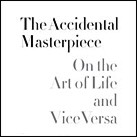Books: The Accidental Masterpiece : On the Art of Life and Vice Versa
 Why I am recommending this book:
Why I am recommending this book:
Art and life go hand in hand. They dance together everyday whether we notice it or not. Art influences life and life influences art. Art makes us more human. Discover, more deeply, its influence.
Click here to purchase this book.
Amazon.com:
The chief art critic of the New York Times, Kimmelman (Portraits) delivers an uplifting art-is-good-for-you message that is surprisingly easy to swallow. Intelligent but not obscure, warm but not intrusively personal, Kimmelman manages in 10 chapters to cover a lot of ground, with a working definition of "art" that goes far beyond what's found in galleries and museums. The reader encounters not only the likes of Pierre Bonnard and Matthew Barney but Hugh Francis Hicks, a serious collector of lightbulbs, and Frank Hurley, whose miraculously preserved images of the 1914 Antarctic Endurance expedition are as haunting as any "art." This is Kimmelman's point: though passionately concerned with "gallery" art, he is more concerned with the rewards of aesthetic experience, how the attentiveness we bring to art can help to make a "daily masterpiece" of ordinary life. Kimmelman's enthusiasm is infectious; he has an impressive ability to incorporate recent artistic trends into his argument; the chapter on "The Art of the Pilgrimage," for instance, discusses the earth art of Michael Heizer and the minimalism of Donald Judd with a clarity that doesn't shortchange the work's difficulty. If Proust can change your life, so can Bonnard.
As a waitress in Florida, where her name is suddenly transposed to "girl," trailer trash becomes a demographic category to aspire to with rent at $675 per month. In Maine, where she ends up working as both a cleaning woman and a nursing home assistant, she must first fill out endless pre-employment tests with trick questions such as "Some people work better when they're a little bit high." In Minnesota, she works at Wal-Mart under the repressive surveillance of men and women whose job it is to monitor her behavior for signs of sloth, theft, drug abuse, or worse. She even gets to experience the humiliation of the urine test.
So, do the poor have survival strategies unknown to the middle class? And did Ehrenreich feel the "bracing psychological effects of getting out of the house, as promised by the wonks who brought us welfare reform?" Nah. Even in her best-case scenario, with all the advantages of education, health, a car, and money for first month's rent, she has to work two jobs, seven days a week, and still almost winds up in a shelter. As Ehrenreich points out with her potent combination of humor and outrage, the laws of supply and demand have been reversed. Rental prices skyrocket, but wages never rise. Rather, jobs are so cheap as measured by the pay that workers are encouraged to take as many as they can. Behind those trademark Wal-Mart vests, it turns out, are the borderline homeless. With her characteristic wry wit and her unabashedly liberal bent, Ehrenreich brings the invisible poor out of hiding and, in the process, the world they inhabit--where civil liberties are often ignored and hard work fails to live up to its reputation as the ticket out of poverty.
Click here to purchase this book.
